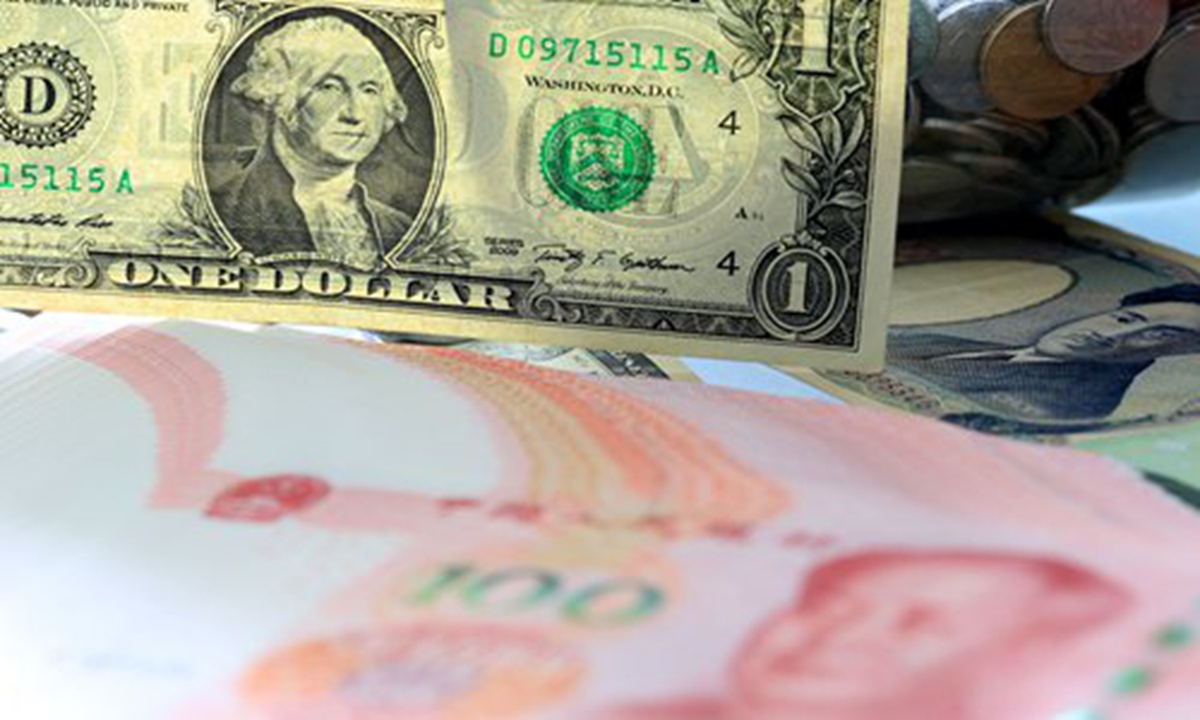Precautions needed for weak dollar’s impact on Chinese export companies
By Zhou Yu Source: Global Times Published: 2020/9/3 18:08:16

File photo
Although the dollar index inched up 0.16 percent on Wednesday, bouncing off two-year lows, the downward trend of the greenback over the past few months still calls for caution.As analysts forecast the currency to continue its slide, its potential impact on Chinese export companies should be carefully assessed.
This round of sharp fall of the dollar index started in June. Mainly thanks to the weakening of dollar, Chinese currency yuan has strengthened against the dollar since then. As of Thursday, the yuan's reference rate against dollar has risen to 6.83 from the level of 7.13 at the beginning of June.
In addition, due to the deteriorating economic conditions of the US and the pessimistic market expectations caused by the COVID-19 pandemic, the depreciation of the dollar against the yuan has intensified.
From the perspective of the current conditions, the yuan's valuation is still within the normal range, and the impact on export companies is limited. Over the past decade, yuan's reference rate against dollar has mainly fluctuated within the range of 6.1-7.1. Based on past experience, the impact of current level of 6.83 will be minor for export companies.
And the yuan is appreciating only against the dollar, not other currencies in the basket - the yuan has even depreciated against some other basket currencies, which means only China's exports to the US will be impacted by the exchange rate change. The overall exports wouldn't see much impact.
However, with the possibility of a substantial depreciation of the dollar, the prospect of a substantial appreciation of the yuan and its negative impact on the export industry deserves attention.
The future trend of the yuan's reference rate against the dollar still mainly depends on whether the dollar is strong or weak. And the expansionary fiscal and monetary policies of the US have cast a cloud on the dollar. The US fiscal and monetary policies are likely to lead to the rapid expansion of its fiscal revenue and expenditure deficit, triggering a substantial depreciation of the dollar.
Stephen Roach, former chief economist at Morgan Stanley, has predicted that a dollar crash is coming, forecasting a 35 percent drop in the dollar's value against other major currencies. Under the current yuan-dollar exchange mechanism, once the dollar falls 35 percent, the yuan's reference rate against dollar will probably rise 15 to 25 percent.
Therefore, China needs to plan ahead and make preparations in advance to prevent related risks. In terms of exchange mechanisms, China could use "countercyclical factor" adjustment to prevent the yuan from appreciating too rapidly.
From the perspective of macro economy, China could use the potential of domestic demand to offset the appreciation's impact on the real economy.
In terms of financial market operation, it is necessary for financial regulatory authorities to launch foreign exchange futures products as soon as possible to provide enterprises with diversified financial hedging tools to prevent risks.
Export companies can reduce the negative impact of exchange rate appreciation through diversification of export destinations and high-end export products. They should also actively use existing financial derivatives to avoid exchange rate appreciation risks.
Finally, the internationalization of the Chinese currency has a significant role in preventing the risk of yuan appreciation. The use of the yuan for export settlements by Chinese enterprises can help reduce the negative impact of exchange rate changes.
The author is the director of the Research Center of International Finance at the Shanghai Academy of Social Sciences. bizopinion@globaltimes.com.cn
Posted in: EXPERT ASSESSMENT